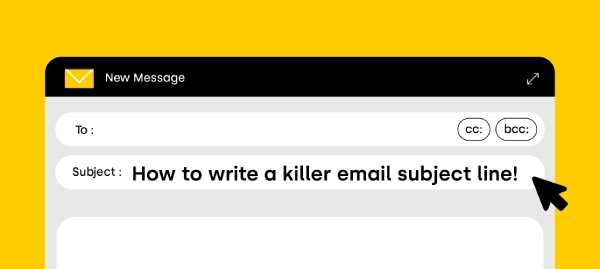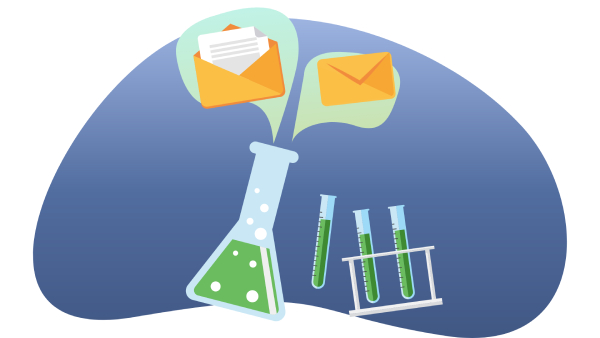Email marketing is a powerful tool that helps businesses effectively reach customers. However, many marketers still make serious mistakes that cause campaigns to fall short of expectations. Let’s explore common errors and ways to fix them to optimize your email marketing strategy.
Not clearly defining the email recipient audience

One of the biggest mistakes in email marketing is sending mass emails without audience segmentation. When emails are sent randomly, without regard for customer needs or behavior, you risk having your emails ignored or even marked as spam. This not only decreases the email open rate but also makes customers feel annoyed, hurting brand credibility.
To fix this, businesses need to use tools for segmenting the email list based on the behaviors and preferences of different customer groups. Personalizing email content also helps increase engagement and better retain customers. In addition, A/B testing is an effective method to evaluate the effectiveness of each customer group and adjust strategies accordingly to enhance campaign performance.
Unattractive email subject lines

The email subject line plays a critical role in whether customers open the email. If the subject line is not compelling enough or fails to invoke curiosity, the open rate will significantly decline. Some businesses often make the mistake of using overly lengthy, unclear subject lines that do not provide specific value to the recipient.
To improve, create subject lines that are concise yet attractive. Strong phrases like “Discover now,” “Don’t miss out,” “Limited offer” can stimulate curiosity and prompt customers to open the email. At the same time, businesses can use subject line analysis tools to test before sending to ensure maximum effectiveness.
Email content is not engaging enough
Many businesses struggle with crafting engaging email content. If the email is too verbose, lacks emphasis, or does not provide real value, customers will not take the time to read it. This leads to a decrease in engagement rates and the campaign’s effectiveness not meeting expectations.
The solution is to write content that is concise, directly addresses the issue, and demonstrates value from the very first lines. The email should have a clear, easy-to-read, and attractive layout. Incorporating images and videos can also be an effective way to make the email more dynamic, helping readers easily access information and increasing conversion rates.
No clear call to action (CTA)
An effective email marketing campaign not only provides information but also directs customers to a specific action. If the email lacks a call to action (CTA) or the CTA is not compelling enough, customers will not know what to do next and may easily ignore the email.
Therefore, the CTA needs to be designed prominently, easy to see, and paired with a clear message. Phrases like “Sign up now,” “Get the offer,” “Buy now” can motivate customers to act quickly. Moreover, placing the CTA in multiple locations within the email also helps increase conversion rates, ensuring that customers do not miss important messages.
Email frequency is too high or too low
The frequency of sending emails is a crucial factor affecting campaign effectiveness. If emails are sent too frequently, customers may feel harassed and choose to unsubscribe. Conversely, if sent too infrequently, the brand will not maintain a presence in the customers’ minds.
The solution is to build a reasonable emailing schedule, averaging 2-4 emails per month depending on the industry and customer characteristics. Use customer data to adjust frequency appropriately, ensuring not to intrude but still maintain connection. Additionally, allowing customers to choose their preferred email frequency is also a way to improve the experience and retain them for the long term.
Not testing before sending

One of the most common mistakes in email marketing is not thoroughly checking before sending. Spelling errors,Formatting errors or broken links not only lead to a negative impression from customers but also reduce brand credibility. An email containing errors will create an unprofessional impression and may be immediately overlooked by customers.
To avoid this situation, businesses need to check emails on multiple devices and different browsers before sending. Using spell-check tools ensures that the content is free from mistakes. Additionally, conducting internal test sends is an important step that helps identify and rectify errors in a timely manner before the email reaches customers.
Not measuring campaign effectiveness
A successful email marketing campaign does not stop at sending emails; it also requires tracking and analyzing effectiveness. If data is not measured, the business will not know if its campaign is truly effective, and thus cannot optimize to achieve better results.
The remedy is to use Google Analytics or specialized email marketing tools to monitor key metrics such as open rates, click rates, and conversion rates. Based on the collected data, businesses can adjust content, sending times, and outreach strategies to optimize campaign performance. By continuously measuring and improving, email marketing will become an effective channel for strengthening customer relationships and boosting sales.
Conclusion
Email marketing is a powerful tool, but if not implemented correctly, it can backfire. Avoiding these mistakes will help you optimize your campaigns, improve conversion rates, and build lasting relationships with customers.







